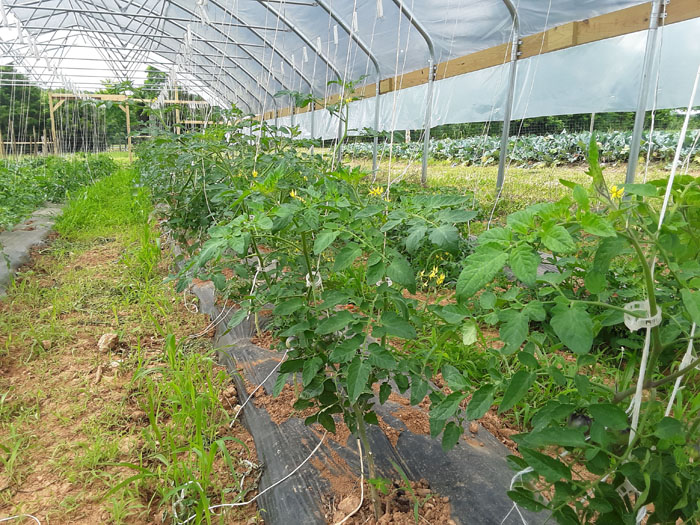Tips for growing healthy tomato plants
Published 12:00 am Sunday, June 7, 2020

- Suspended trellising lines work well for indeterminant tomatoe varieties, which can grow 10 feet tall or more. Submitted photo
By Michael Fine
For the Salisbury Post
Spring has presented some obstacles for tomato crops across the central piedmont of North Carolina. Warm temperatures at the beginning of April coaxed many gardeners to set plants out earlier than normal in hopes of an early harvest.
Without protective covers over the plants, many gardeners suffered frost damage as a cold front moved into the Piedmont in late April. For tomato plants that were transplanted from mid to late May, last week’s storms brought massive amounts of rain, creating saturated soil that persisted for several days and drowned root systems in low-lying areas. These environmental pressures are not unusual for this time of year, which is why growers should plan their vegetable production system to withstand the most challenging of conditions.
Here are some tips to growing tomatoes that will help your plants thrive:
Site selection and soil
When selecting a site to grow your tomato plants, think about the plant’s natural history and try to model your garden plot to fit their native environment. For tomatoes, which originated throughout the Andes Mountains of Central and South America, this means selecting a site that resembles a well-drained, upland habitat that receives full sun. Tomatoes prefer sandy-loam soils with a PH of 6.0-6.8. If you are growing tomatoes in heavy clay soils, then consider adding compost to break up the clay particles and allow for better moisture and nutrient holding capacity.
Nutrient requirements
Nitrogen, phosphorus and potassium, known as “primary nutrients,” are the three main ingredients in most fertilizers and are vital to tomatoes. Plant growth and chlorophyll production depend on nitrogen, while phosphorus helps tomatoes grow and cope with stress while aiding in energy production. Potassium fights disease, improves tomato quality and is also important to photosynthesis. These nutrients leach from the soil as tomatoes grow, so you want to add continuous, small dosages for maximum absorption.
Tomatoes need “secondary nutrients” to compliment the primary nutrients. They are calcium, magnesium and sulfur and are needed in lesser amounts. Calcium improves cell health, protecting against diseases and bruises. Tomatoes with higher levels of calcium are also more nutritious. Photosynthesis and chlorophyll both rely magnesium, which helps their overall quality. A deficiency in magnesium and sulfur harms growth and causes yellow leaves.
Tomatoes need micronutrients too: zinc, iron, boron, chloride, molybdenum, copper and manganese. Most store-bought fertilizer blends consist of the three main macro-nutrients while specialized blends can be purchased through greenhouse industry suppliers.
Trellising is key
Many options are available to trellis tomato plants. Cages, lines hung from an overhead structure, or stake and string methods all work well. For determinate tomatoes which grow to a “determined” height and produce their full crop load in a short period of time, stake and string or short cages work fine. For indeterminate varieties, a trellising system that will support 10-foot vines or longer by the end of the season may be needed. A leader line hanging from a support structure works well for longer vines.
For more information, call the North Carolina Extension office, Rowan County Center at 704-216-8970.



